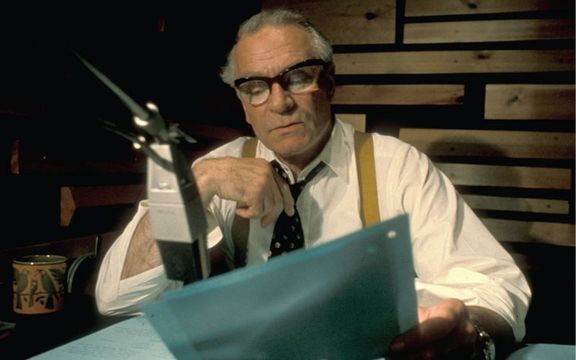
The late great Sir Laurence Olivier narrated each of the 26 episodes of this famous documentaryThe Word at War/ ITV
When the ITV series "The Word at War" came out in 1973, many people thought it marked a signal change in television documentaries, with its extensive archival footage, talking-head interviews, and sweeping, panoramic vision of World War II.
But while many have imitated the 26-hour Sir Laurence Olivier narrated tour de force, nothing has really come anywhere near to equaling it in sheer scope and depth, let alone quality.
The timing was everything and the makers managed to hit that magic sweet spot in retrospect— the point where the event is far away enough to present it dispassionately, but not so long ago the people who witnessed it are no longer with us.
Producer Sir Jeremy Isaacs and his team trod new ground in the series as well as interviewing some of the serious movers and shakers of the time; generals, commanders, and politicians that shaped the various aspects of the war, they also talked to ordinary folk whose lives were changed forever by the events of the mid-20th century.
Even further than that, the luxury of distance meant that they could also talk to people from “the enemy,” such as the Luftwaffe pilot who seemed slightly surprised to hear that he had taken part in “The Battle of Britain.” Like every conflict, World War II was a war of many sides, each with its own perspective—and battle names.
There are many reasons why a series like The World at War will never be made again, not least the hope that we’ll never have to witness another world war. Production methods, costs and the commercial way the media is run these days mean that such bold programming, taking up so much air time, would never be green-lit. No collaboration today could raise the kind of money for a single project (even in 1973 the production costs broke records), which makes those series we do have gems to be treasured.
From the rise of Nazi Germany, through Pearl Harbor, and the war in the Pacific to Hitler’s chilling “final solution,” The World at War has never really left us. Even today, you can switch on some obscure channel and find reruns of the series, and it’s long been out on video. But the original Thames Television source material was getting tired, and it’s a mark of just how special a series pushing 40 years old is when the decision is made to remaster it frame by frame for today’s high-definition, widescreen DVD and Blu-Ray technology. An average of 140,000 “fixes” have been made for each of the 26 episodes, ranging from basic cleaning to audio remastering, presenting the best-looking print since the films were first shown.
There have been some mutterings from film fanatics that the technology used to create a widescreen version from the original 4:3 format has lost some data. The restorers have countered by pointing out that they carefully judged each scene individually, so as not to lose anything significant. Watching it on a big screen, I didn’t notice any losses at all. And there is something very comforting to see a “proper documentary” that relies on the strength of its material, rather than cheap gimmicks, to fill all those hours. I suspect The World at War has lasted as it has because it has no celebrity presenter whose ego comes before the story, and it’s totally free of those really annoying “dramatic reconstructions” that modern documentaries seem to use merely to pad out thin material.
Of course, there will always be things that any series misses. In 1973, many documents that have been made public now were still very securely locked in the box marked “Top Secret.” Witnesses have come forward, diaries have been found and archaeology has discovered new information. There will always be revisions to be made as new evidence comes to light, new stories are told (such as the remarkable Enigma Code tales from Bletchley, whose tellers were still tight-lipped in 1973), and as a new generation adds its own layer of mythology to the strata of world war history, but this seminal, groundbreaking, dare I say “definitive,” series can still hold its own against legions of younger contenders.
* Originally published in 2016





Comments